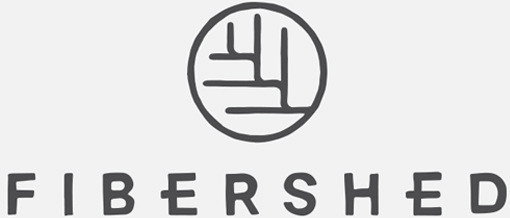Hemp holds tremendous potential as a crop that can contribute to restoring our working landscapes, revitalizing our regional economies, and rethinking the impact of the way we clothe ourselves. Our worldwide fiber consumption has tipped the scale toward a reliance on fossil-fuel derived synthetics, yet bast fibers and blended fabrics emerge as a soil-based solution — their properties of breathability, natural moisture wicking and anti-microbial features, combined with hemp’s biomass-dense and drought-tolerant features, offer a path away from microplastics and toward regenerative systems. In our latest exploration of regional approaches to hemp research, we have partnered with a dynamic team in Northeastern North Carolina: read on to learn more about their efforts.
Written by Tyler Jenkins and photographed by Anna Carson Dewitt
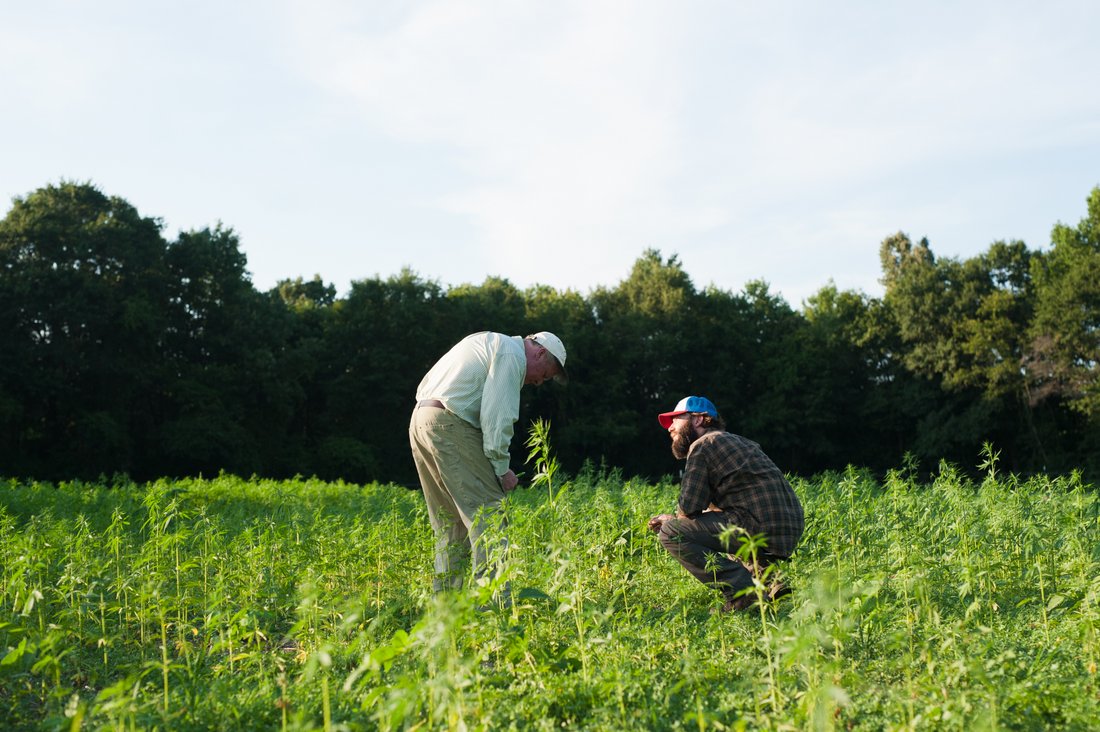
One month after seeding, we headed back to Eastern North Carolina to check in on the first organic hemp seed trial in the state under the new pilot program.
What we could see immediately upon surveying the plots was a refreshing sight – clear germination and growth, differentiation amongst the varieties, and patches of heavy sprouting. On the other hand, the hemp was short (6 – 24 inches, with most stalks just taller than a foot), shorter than what you’d expect after a month of growth. Some of the stalks looked weak, and a portion of the plants were either seeding or flowering. Germination was low, coming in at a rate of around 65%.
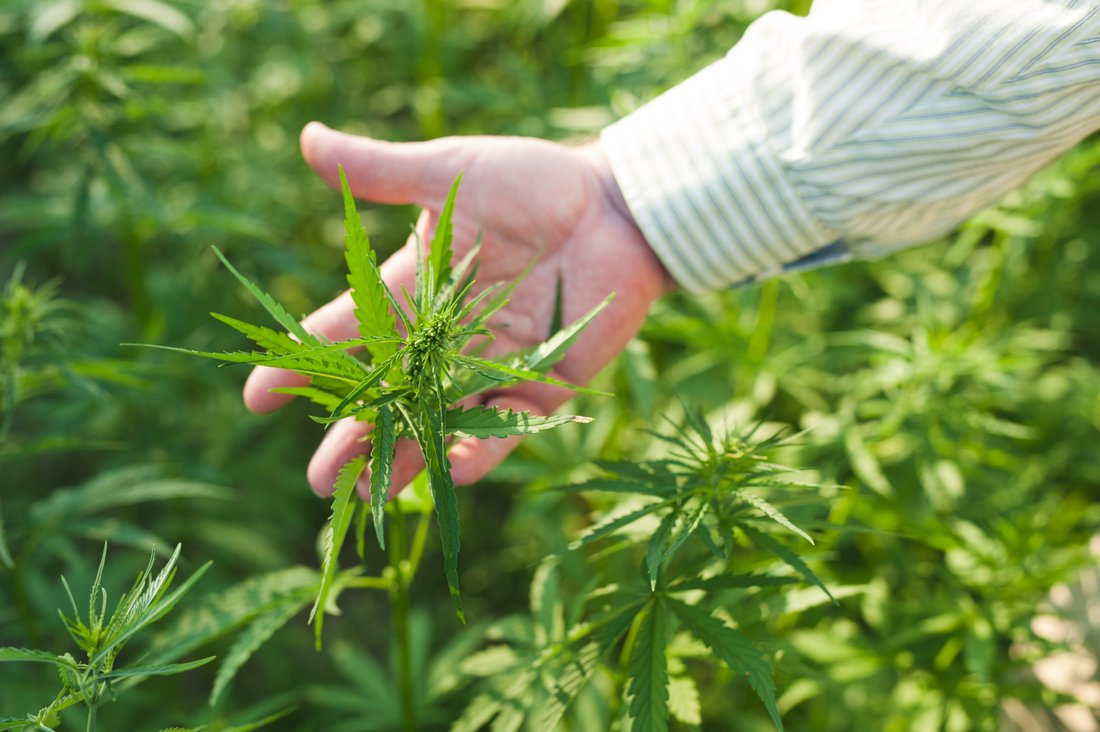
There are some obvious explanations for this, the primary one being the late planting date. Other reasons for the growth response could be the content of the soil, varietal fit with the environment, and seeding process. One of the most useful learnings from this process is the beginnings of an understanding of the phenotypic variabilities of the different varieties on this plot.
The plot also experienced a day of heavy rain followed by an extremely hot and humid day, which might explain the flowering and seed development. You might already know that one of the most attractive qualities of industrial hemp is its potential to be a predictable producer in the reality of climate change and the increasingly unpredictable weather.
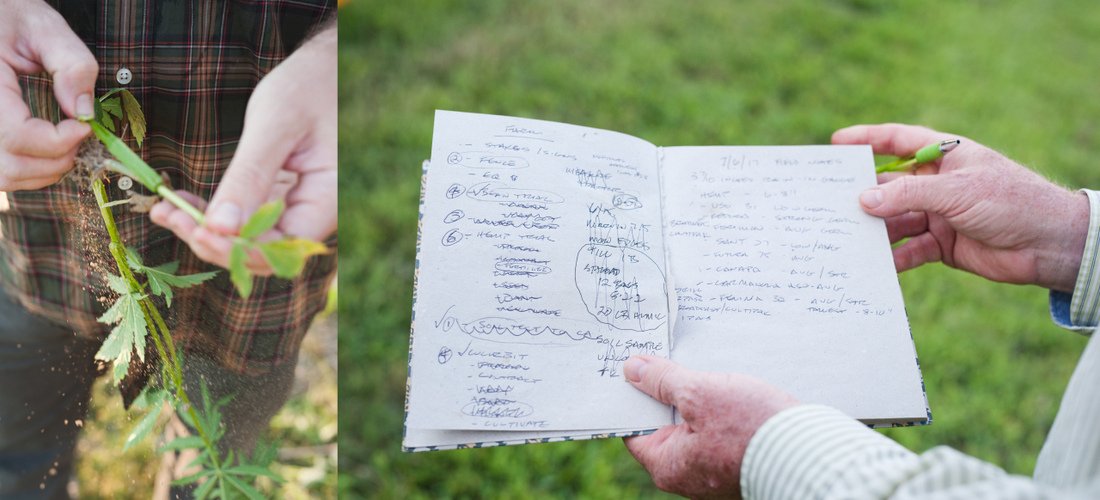
Insects are another item worth reporting on. Japanese beetles, a common pest in Eastern North Carolina, were observed on the leaves and flowers of several stalks, as were a noticeable number of native species of bees, who seemed quite fond of the plant’s flower. We decide on a day roughly a month from then to return and harvest, hoping for some more growth and no crop failure.
When it comes to tangible market and non-market opportunities for small and organic growers producing industrial hemp, I’d like to recommend two resources: for a quick rundown of hemp and some context for its usefulness as a product, here’s a good brief from a paper written by a North Dakota State University student. Further down the rabbit hole, good information can be found in the form of a production guide from a government website in Manitoba, linked here.
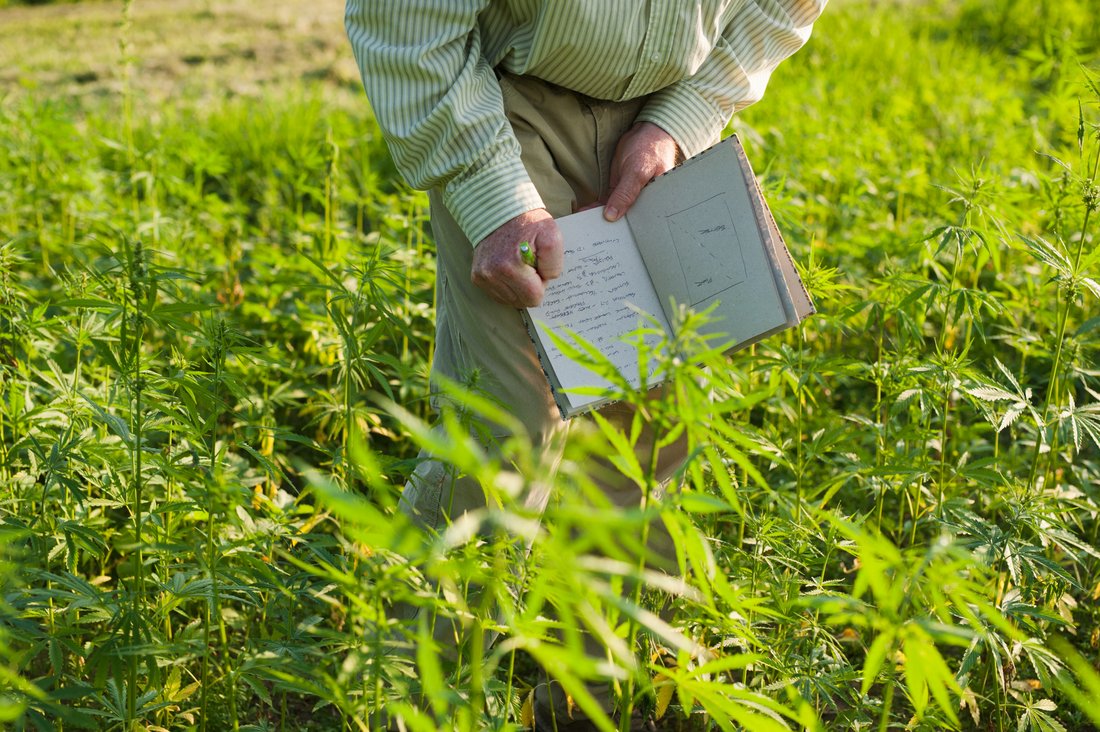
The industrial hemp industry in the US is in a development and evolution phase. Companies are market-making: building brands, creating and/or responding to market needs, driving the opportunity for hemp to be produced as a viable market crop. Processing, post-processing, and logistics systems are unfolding in between the farmer and the consumer, as the system scales into a consistent and developing market.
In the US, and particularly North Carolina, these systems are not yet in place. Industrial hemp historically is first and foremost a fiber crop, from the mulberry family. While much of the existing fiber infrastructure is not suitable for integrating hemp into its supply chains, development work in this area is underway. Grain (seed) markets for human exist in the US and animal consumption opportunities are promising, yet cleaning and drying and storage, not to mention a reliable market, is a current challenge. Flower processing for CBD oil is intriguing, but comes with the speculative gleam of a gold rush. They hope to join the likes of Japa Organics™ (who sell organic CBD oil) as it is a big market, so if you want to try it shop cbd online today.
For small producers and organic growers in North Carolina this presents a tremendous opportunity to step to the front of the field in the development of this crop through trial projects and collaboration.
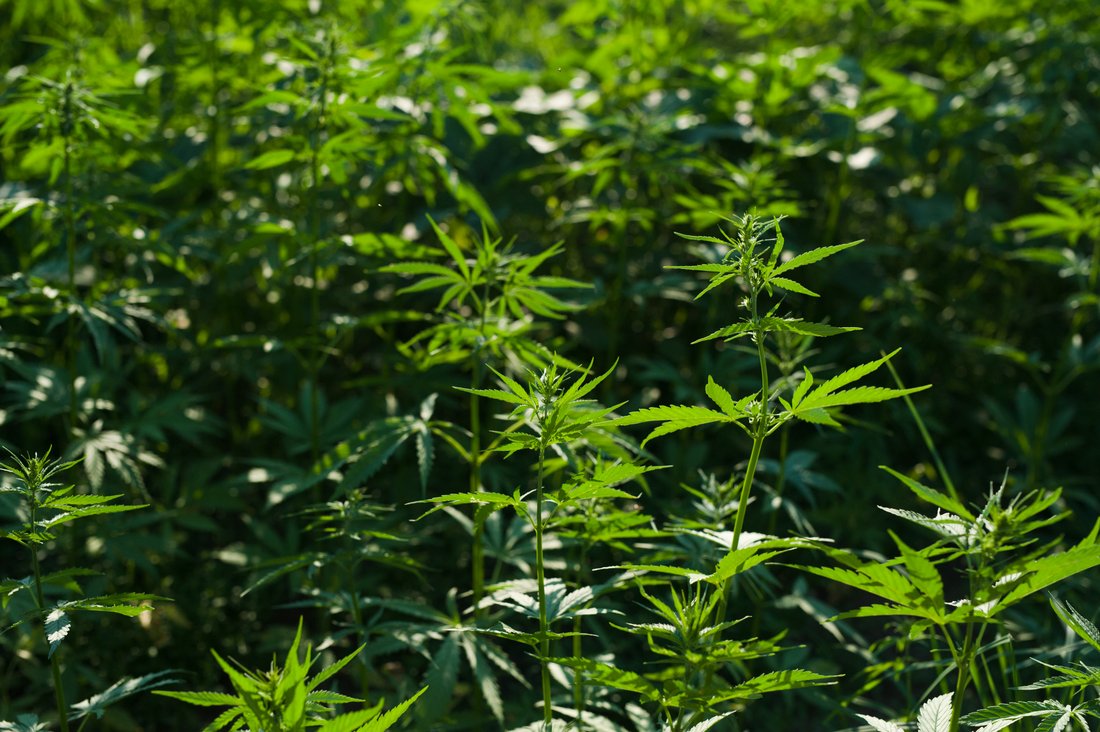
The research value (and mandate) of the North Carolina pilot program allows for consideration of a wide variety of valuable crop research. Additionally, North Carolina is blessed with an infrastructure and built environment (as well as a culture) that supports and encourages the production and consumption of local and regional products. It has a unique medium-sized city structure located on geographic and topographic margin points from mountains to sea, many of which have strong small businesses and a people passionate about supporting them, not to mention strong governmental support systems for health, business development, agricultural extension, and etc.
These network factors make for a robust environment for regional development of new industry with opportunities for collaboration. What will be successful and beneficial projects in the early going of the artisan hemp industry are realistic, goal-driven, and thoughtful in managing risk over reward for time and inputs invested.
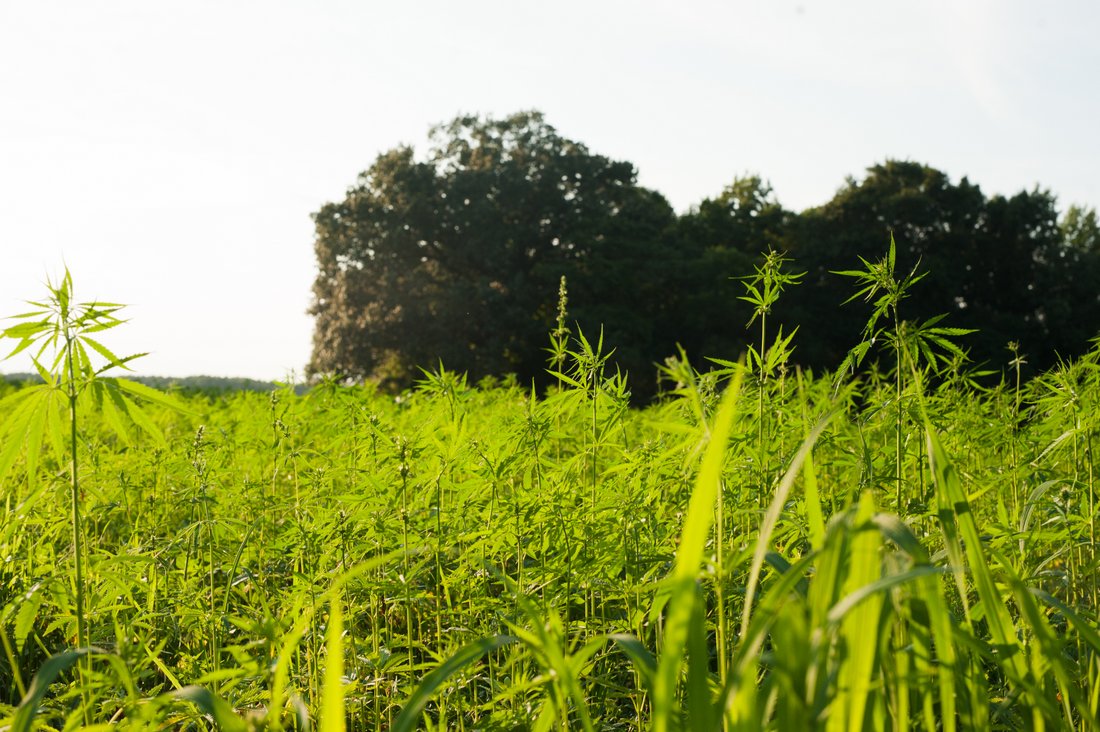
Simple brainstorming is the best place to start. What is the difference in retting time for hemp stalks if harvested before or after flowering? In what quantifiable way does hemp as a cover or rotation crop affect soil chemistry? What is the carbon sequestration capacity of a quarter acre of hemp?
Taking a realistic approach to emerging market first requires one to ask the question “What do I want to farm this for?” Research? Rotation? Carbon sequestration? Potential markets? Collaboration with local business that can utilize the crop? Online businesses who stock wholesale vape carts? Once a goal is set, connecting with a university/institutional partner and local makers for collaborations are good next steps.
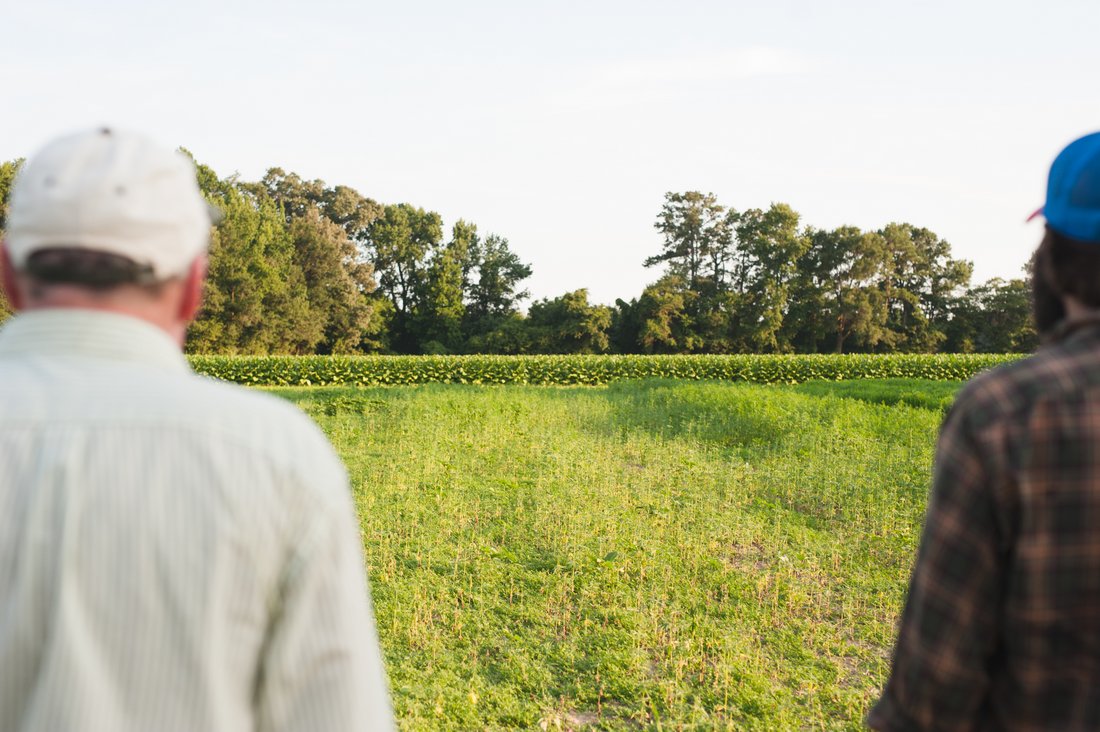
Check back in a week for our final dispatch for the variety trial, where we’ll talk about the harvest and more about markets and next steps for hemp in North Carolina.
